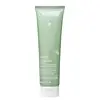What's inside
What's inside
 Key Ingredients
Key Ingredients

 Benefits
Benefits

 Concerns
Concerns

 Ingredients Side-by-side
Ingredients Side-by-side

Water
Skin ConditioningLauryl Hydroxysultaine
CleansingAcrylates Copolymer
Sodium Chloride
MaskingSodium Methyl Cocoyl Taurate
CleansingDisodium Cocoamphodiacetate
CleansingPotassium Cocoyl Glycinate
Potassium Cocoate
EmulsifyingDipropylene Glycol
HumectantHydroxyacetophenone
AntioxidantCaprylyl Glycol
EmollientRosmarinus Officinalis Leaf Oil
MaskingHouttuynia Cordata Powder
Skin ConditioningHexylene Glycol
EmulsifyingEthylhexylglycerin
Skin ConditioningDisodium EDTA
Dipotassium Glycyrrhizate
HumectantTocopherol
AntioxidantWater, Lauryl Hydroxysultaine, Acrylates Copolymer, Sodium Chloride, Sodium Methyl Cocoyl Taurate, Disodium Cocoamphodiacetate, Potassium Cocoyl Glycinate, Potassium Cocoate, Dipropylene Glycol, Hydroxyacetophenone, Caprylyl Glycol, Rosmarinus Officinalis Leaf Oil, Houttuynia Cordata Powder, Hexylene Glycol, Ethylhexylglycerin, Disodium EDTA, Dipotassium Glycyrrhizate, Tocopherol
Water
Skin ConditioningVitis Vinifera Fruit Water
Skin ConditioningDecyl Glucoside
CleansingGlycerin
HumectantSodium Cocoyl Glutamate
CleansingSucrose Cocoate
EmulsifyingAcacia Senegal Gum
MaskingXanthan Gum
EmulsifyingPropylene Glycol
HumectantCitric Acid
BufferingAloe Barbadensis Leaf Powder
Skin ConditioningSalicylic Acid
MaskingVitis Vinifera Juice
AntioxidantSodium Benzoate
MaskingPelargonium Graveolens Flower Oil
MaskingMentha Piperita Oil
MaskingCitral
PerfumingCymbopogon Citratus Leaf Oil
MaskingRosmarinus Officinalis Leaf Oil
MaskingCitronellol
PerfumingGeraniol
PerfumingPotassium Sorbate
PreservativeLinalool
PerfumingLavandula Hybrida Oil
EmollientMelissa Officinalis Leaf Oil
MaskingWater, Vitis Vinifera Fruit Water, Decyl Glucoside, Glycerin, Sodium Cocoyl Glutamate, Sucrose Cocoate, Acacia Senegal Gum, Xanthan Gum, Propylene Glycol, Citric Acid, Aloe Barbadensis Leaf Powder, Salicylic Acid, Vitis Vinifera Juice, Sodium Benzoate, Pelargonium Graveolens Flower Oil, Mentha Piperita Oil, Citral, Cymbopogon Citratus Leaf Oil, Rosmarinus Officinalis Leaf Oil, Citronellol, Geraniol, Potassium Sorbate, Linalool, Lavandula Hybrida Oil, Melissa Officinalis Leaf Oil
 Reviews
Reviews

Ingredients Explained
These ingredients are found in both products.
Ingredients higher up in an ingredient list are typically present in a larger amount.
Rosmarinus Officinalis Leaf Oil is oil expressed from the leaves of the rosemary plant.
Rosemary Leaf Oil is a fragrance and helps give your product a scent. If you are sensitive to irritating fragrances, this one contains camphor. Camphor has been found to irritate skin.
This oil also contains antioxidant and antimicrobial properties. As an antioxidant, it may protect you skin against damage. This can help slow down the signs of aging.
Learn more about Rosmarinus Officinalis Leaf OilWater. It's the most common cosmetic ingredient of all. You'll usually see it at the top of ingredient lists, meaning that it makes up the largest part of the product.
So why is it so popular? Water most often acts as a solvent - this means that it helps dissolve other ingredients into the formulation.
You'll also recognize water as that liquid we all need to stay alive. If you see this, drink a glass of water. Stay hydrated!
Learn more about Water